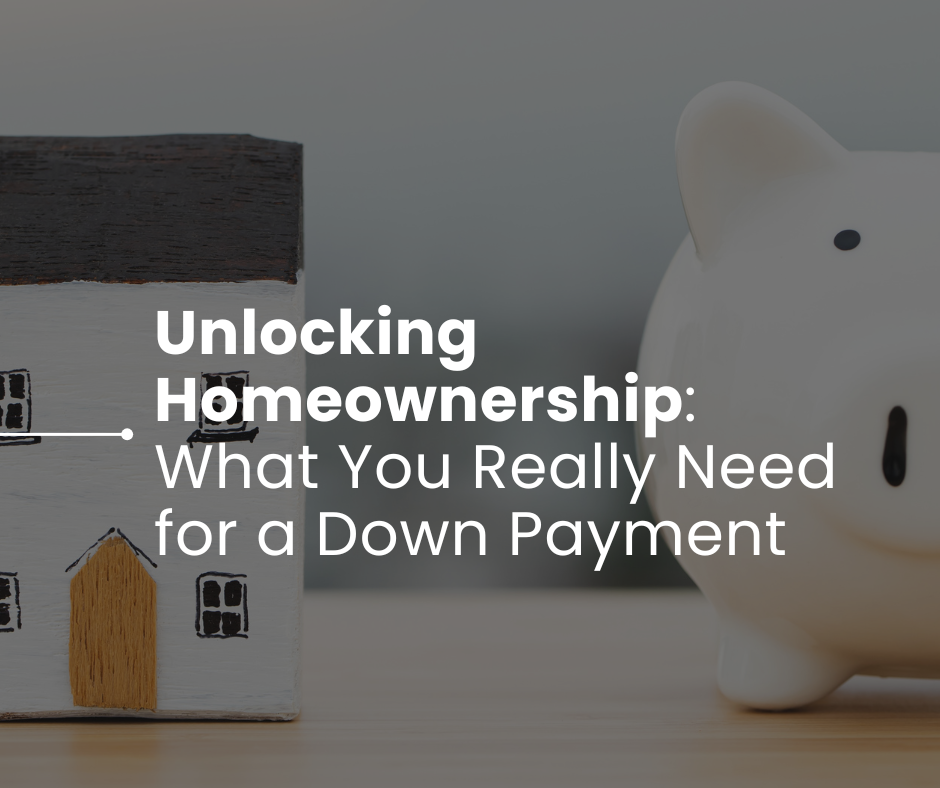How to Buy a Home with No Money Down - Part 1
Buying a home shouldn’t be reserved for the wealthy. Everyone deserves the chance to own their own home if they choose. Buying a home is out of reach...

There’s a lot to understand for those learning how to buy a house with no money down. As you can see, it’s no easy task. Not everyone can qualify for a no down payment mortgage. So, what do you do if you don’t qualify for a USDA or VA loan?
You’ll be happy to hear that there are alternative low-cost options for individuals who don’t qualify for USDA or VA assistance. It’s important to keep in mind that not every loan is right for your situation. You need to understand your needs and determine which loan best serves you. What are some low down payment mortgages and their required payment percentages?
When it comes to mortgages with low down payments, a conventional loan is popular for many reasons. This type of loan allows you to borrow up to 97% of a home’s purchase value, leaving only 3% for you to pay as a down payment. You cannot pay less than a 3% down payment for this loan type. This loan type is offered by Fannie Mae and Freddie Mac and is intended for first-time homebuyers, although there are exceptions to this. While it holds similarities to FHA loans, this conventional loan is a more affordable option. Some defining factors of this loan type are:
The Home Possible® loan is a great option for very low to low-income borrowers. It requires a 3% minimum down payment which is one of the best options for those who are low-income but don’t qualify for no down payment home loans. Some features of this loan are:
Freddie Mac also offers the HomeOne® mortgage loan which has a 97% LTV. However, this is only available to first-time homebuyers. This makes homeownership more accessible to first-time buyers. Some qualities of this type of loan are:
This type of loan is similar to the Home Possible loan offered by Freddie Mac. This loan is offered by Fannie Mae and was created to aid multi-generational households in getting approved for mortgages, although many other people are eligible. Some things you can expect from the HomeReady® Mortgage is:
This is the most popular government-backed home loan in the U.S.A. They are insured, specifically, by the Federal Housing Administration. The down payment option for this type of loan can be as low as 3.5% — a bit more expensive than the other loans we’ve talked about. The credit score requirements are a bit more accessible for a wider range of people. Some borrowers, with a score as low as 500, can get an FHA loan. However, the lower your credit score, the larger down payment you’re required to make. So, for a score of 500, you would pay 10% in down payment. Some defining factors of these loans are:
This is a little less restrictive than the conventional 97 loan. This is a loan that isn’t backed by the government. They’re originated by banks, credit unions or other financial institutions. These loans do have a slightly more expensive down payment option, coming in at 5% on average. These are known for being the most popular type of loan because of their flexibility and accessibility. Some features include:
This loan is the least accessible option out of the low cost down payment options. It is reserved for homebuyers with higher credit scores. It is broken out into two loans which offer lower payments. The required down payment is 10%. Then you are given a mortgage for 80% of your loan amount, and a second mortgage for 10%. This second mortgage can also be known as HEL (home equity loan) or HELOC (home equity line of credit). You can expect:
Unfortunately, making a down payment on a house isn’t always possible, even with these lower cost loans. You don’t have to give up hope, however. Down payment assistance is a great option for first-time homebuyers who feasibly can’t swing a down payment. These are grants from state or local assistance programs with usually reasonable requirements. These programs can be run by nonprofits, finance agencies, county and city governances, and employers. Help can come in the form of:
.png)
Buying a home shouldn’t be reserved for the wealthy. Everyone deserves the chance to own their own home if they choose. Buying a home is out of reach...
.png)
Buying a home is one of the most important and expensive decisions you’ll ever make. For that reason alone, you need to use the best, most accurate...

Is a Down Payment Holding You Back from Buying a Home?